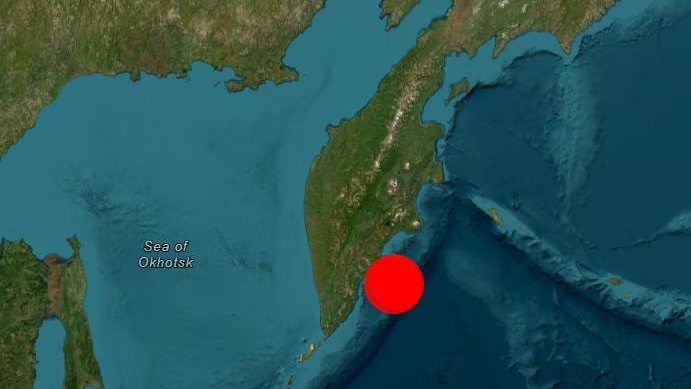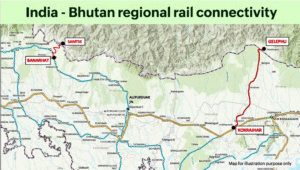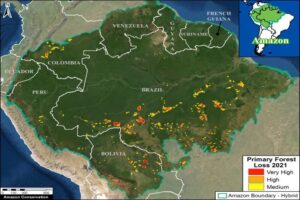
Kamchatka Earthquake 2025
One of the Strongest Quakes in Modern History and Its Ring of Fire Linkage
GK & Current Affairs for CLAT | CLAT Current Affairs 2026
Powered by CLAT Gurukul – Best online coaching for CLAT
Introduction:
On July 30, 2025, a powerful 8.8 magnitude earthquake struck the Kamchatka Peninsula in Russia’s Far East, making it one of the most intense seismic events in the last two decades. Situated along the notorious “Ring of Fire”, this region has historically experienced some of the strongest and deadliest earthquakes known to mankind. Although this particular quake did not cause major fatalities, its sheer scale demands a deeper understanding of global seismic belts, tectonic processes, and disaster management preparedness.
This topic holds critical importance for aspirants of CLAT 2026, especially in the Current Affairs and Legal Reasoning sections, where comprehension of environmental and global developments is often tested.
Why in News:
- On July 30, 2025, Kamchatka Peninsula experienced a massive 8.8 magnitude earthquake, which is the second-strongest quake in the last 20 years.
- It triggered a tsunami, but no deaths were reported.
- It occurred in the Circum-Pacific Seismic Belt, commonly referred to as the Ring of Fire, known for hosting over 80% of the world’s largest earthquakes.
- It rekindled memories of the 2011 Tohoku Earthquake (Japan) which caused the Fukushima nuclear disaster.
Point-wise Summary:
- Event Overview
- The 8.8 magnitude earthquake struck Kamchatka Peninsula, Russia, around 6500 km east of Moscow.
- The seismic waves triggered a tsunami with wave heights reaching up to 3-4 meters in Kamchatka and 2 feet in Hawaii.
- Despite its intensity, no lives were lost, highlighting advancements in early warning systems and low population density in the region.
- Comparative Strength
- This was the strongest earthquake since the 2011 Tohoku earthquake in Japan (9.1 magnitude).
- Ranked second strongest in the last 20 years.
- Other major earthquakes listed include those in Chile, Indonesia, and Fiji.
- Rare but Not Unusual
- Earthquakes of 8.5+ magnitude are rare.
- Only five such quakes have occurred in the last two decades.
- Kamchatka Peninsula is noted for frequent tectonic activity, lying in a highly seismic zone.
- Geological Setting: Ring of Fire
- The Kamchatka Peninsula is located on the Circum-Pacific Seismic Belt, also known as the Ring of Fire.
- It’s the most seismically active region on Earth, responsible for nearly 80% of the planet’s earthquakes.
- Other Ring of Fire countries include Japan, Indonesia, Philippines, New Zealand, Chile, and USA (California).
- Cause: Subduction Process
- The earthquake was caused by subduction, where a denser oceanic plate sinks beneath a lighter continental plate.
- This tectonic interaction leads to immense pressure build-up, which is eventually released as an earthquake.
- Subduction zones are also sites for volcanic activity.
- Other Seismically Active Regions
- Outside the Ring of Fire, active seismic zones include:
- Himalayan belt (India-Nepal-Tibet)
- Mid-Atlantic Ridge
- North Anatolian Fault (Turkey)
- East African Rift
- Historical Data & Frequency
- The Kuril Islands (near Kamchatka) have seen 130 earthquakes of 7+ magnitude since 1900.
- In 1952, Kamchatka experienced a 9.0 magnitude earthquake, among the strongest in history.
- Impact & Preparedness
- Despite the tsunami, no deaths or major damage reported.
- This was attributed to:
- Low population density in Kamchatka (0.62 persons/sq. km).
- Efficient early warning systems.
- Improved infrastructure resilience post past disasters.
- Global Implications
- Highlights the need for international cooperation in seismic data sharing.
- Countries like India, prone to earthquakes (e.g., Kashmir, Himachal, Northeast), can benefit from studying such high-intensity zones.
- Can influence disaster laws, building codes, and urban planning strategies.
- Top 10 Earthquakes in Last 20 Years (USGS Data)
Date | Magnitude | Location |
March 11, 2011 | 9.1 | Tohoku Region, Japan |
July 30, 2025 | 8.8 | Kamchatka Peninsula, Russia |
February 27, 2010 | 8.8 | Maule, Chile |
April 11, 2012 | 8.6 | Northern Sumatra, Indonesia |
September 12, 2007 | 8.4 | Bengkulu, Indonesia |
September 17, 2015 | 8.3 | Illapel, Chile |
May 24, 2013 | 8.3 | Okhotsk Sea, Russia |
November 15, 2006 | 8.3 | Kuril Islands, Russia |
July 29, 2021 | 8.2 | Alaska Peninsula, USA |
August 19, 2018 | 8.2 | Levuka, Fiji |
Notes: Explanation of Peculiar Terms
- Magnitude (Richter Scale) – A logarithmic scale used to measure the energy released by an earthquake. Each whole number increase represents a tenfold increase in amplitude and about 32 times more energy release.
- Ring of Fire – A horseshoe-shaped region around the Pacific Ocean, known for its frequent earthquakes and volcanic eruptions, due to subduction zones.
- Subduction Zone – A tectonic boundary where one plate slides beneath another, often triggering earthquakes and volcanic activity.
- Tsunami – A series of waves caused by the displacement of a large volume of water, usually due to undersea earthquakes.
- Tohoku Earthquake – The 2011 Japan earthquake that caused a massive tsunami and led to the Fukushima nuclear disaster.
- Epicenter – The point on the Earth’s surface directly above where an earthquake originates.
- Seismic Belt – Zones on Earth that are prone to seismic activity due to tectonic movements (e.g., Ring of Fire, Himalayan belt).
CLAT Relevance: Legal and Analytical Thinking
For CLAT 2026 aspirants, this event is a strong candidate for both Current Affairs passages and Legal Reasoning case studies:
- Disaster Management Acts (like NDMA in India) can be contextually tested.
- Students might be asked to evaluate government response, analyze population vulnerability, or interpret environmental law applications.
- Conceptual understanding of earthquake resilience, policy making, and international cooperation on natural disaster management is crucial.
Analytical Insights for CLAT Legal Section:
- Can the state be held liable for negligence in disaster preparedness?
- Should disaster-prone areas enforce stricter construction laws?
- Is climate change increasing seismic activity? – While not proven, such analytical links may be discussed.
Conclusion:
The Kamchatka Earthquake of 2025 serves as a crucial reminder of Earth’s volatile nature. Despite its formidable magnitude, effective disaster management and geographical conditions helped avert loss of life. For aspirants of CLAT 2026, it’s a textbook example of how science, law, and policy intersect, making it highly relevant for both the Current Affairs and Legal Reasoning sections of the exam.
Students preparing with the best online coaching for CLAT, such as CLAT Gurukul, should treat this event not just as a news item but as an interdisciplinary learning module spanning law, geography, environmental studies, and public policy.
This Blog is Powered by CLAT Gurukul — India’s Leading Law Entrance Prep Platform
At CLAT Gurukul, we believe in empowering future legal minds with the right blend of knowledge, strategy, and mentorship. This blog is a reflection of our commitment to quality content that not only helps aspirants stay updated but also sharpens their conceptual clarity.
Why CLAT Gurukul?
- Personalized Mentorship by Top Legal Educators
- Comprehensive Study Materials & Legal Updates
- Daily Practice Sets, Mocks & Performance Tracking
- Result-Oriented Strategy for CLAT, AILET, and CUET
Whether you’re reading this article to deepen your understanding or to stay ahead in your exam prep — you’re already one step closer with CLAT Gurukul by your side.
Join thousands of successful aspirants who trusted CLAT Gurukul and cracked India’s top law entrance exams.
Visit https://www.youtube.com/@CLATGurukul/shorts to learn more or speak to our experts now!
Note from CLAT Gurukul
At CLAT Gurukul, we are committed to providing free CLAT study material, including CLAT current affairs, legal reasoning practice sets, general knowledge updates, logical reasoning questions, English comprehension exercises, and more — all curated by top mentors.
Our blog section is regularly updated with high-quality CLAT content tailored to match the evolving pattern of the CLAT UG exam. Whether you’re looking for CLAT 2026 current affairs, CLAT legal reasoning passages, or mock practice sets, we have you covered.
We believe in open-access learning and will continue to publish free CLAT preparation resources to help serious aspirants succeed.
Explore more free content under categories like:
Best online coaching for CLAT, CLAT current affairs, CLAT GK updates, CLAT legal updates, CLAT logical reasoning, and CLAT English preparation.
For structured learning, daily mocks, and expert mentorship, visit https://www.youtube.com/@CLATGurukul/shorts — the Best CLAT Coaching in Patna and India’s most trusted platform for CLAT online coaching.




